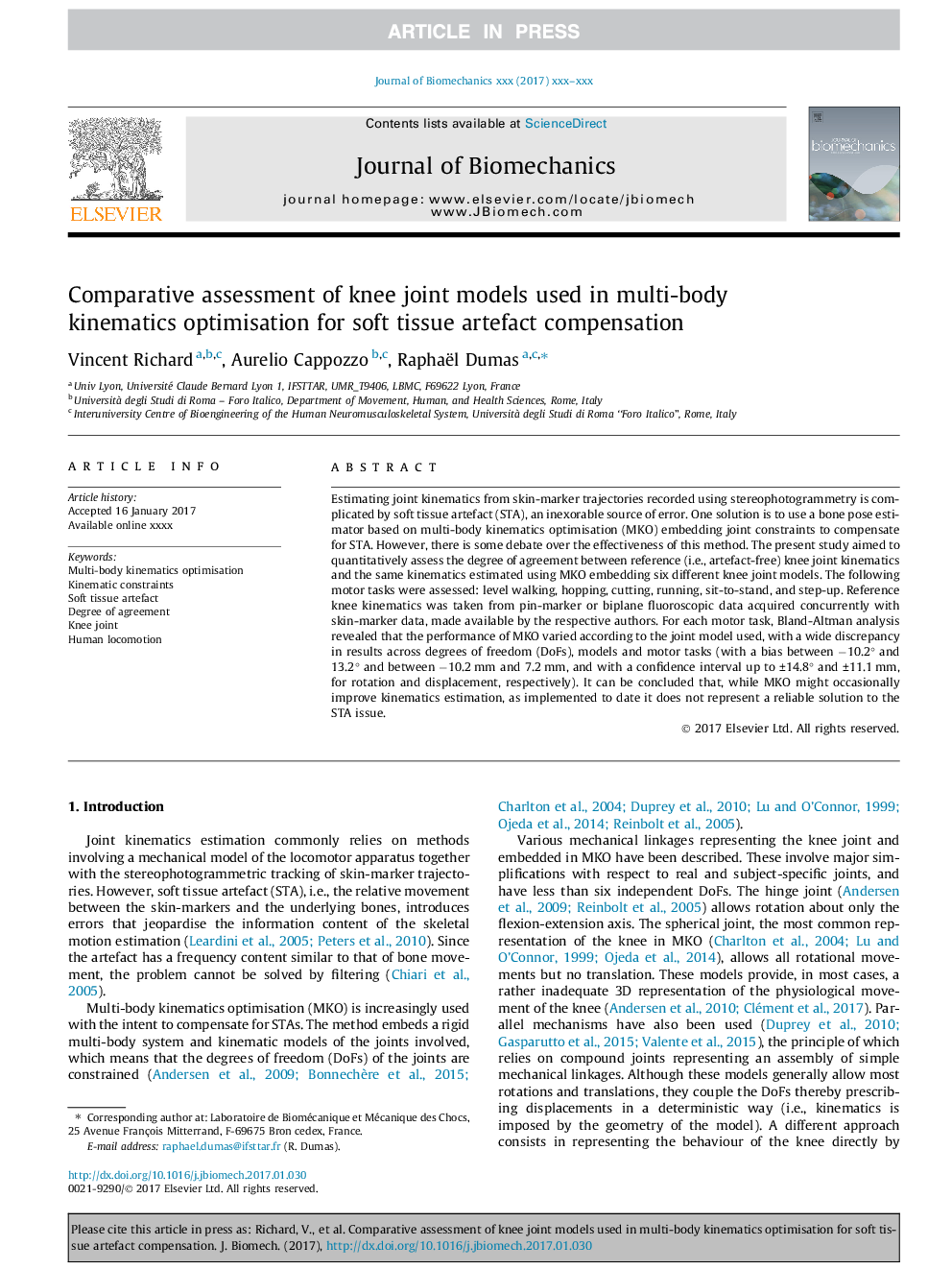| کد مقاله | کد نشریه | سال انتشار | مقاله انگلیسی | نسخه تمام متن |
|---|---|---|---|---|
| 5031892 | 1471102 | 2017 | 7 صفحه PDF | دانلود رایگان |
عنوان انگلیسی مقاله ISI
Comparative assessment of knee joint models used in multi-body kinematics optimisation for soft tissue artefact compensation
ترجمه فارسی عنوان
ارزیابی مقایسهای مدلهای مفصل زانو که برای بهینه سازی چندین جنبشی برای جبران نرمی بافت نرم استفاده می شود
دانلود مقاله + سفارش ترجمه
دانلود مقاله ISI انگلیسی
رایگان برای ایرانیان
کلمات کلیدی
موضوعات مرتبط
مهندسی و علوم پایه
سایر رشته های مهندسی
مهندسی پزشکی
چکیده انگلیسی
Estimating joint kinematics from skin-marker trajectories recorded using stereophotogrammetry is complicated by soft tissue artefact (STA), an inexorable source of error. One solution is to use a bone pose estimator based on multi-body kinematics optimisation (MKO) embedding joint constraints to compensate for STA. However, there is some debate over the effectiveness of this method. The present study aimed to quantitatively assess the degree of agreement between reference (i.e., artefact-free) knee joint kinematics and the same kinematics estimated using MKO embedding six different knee joint models. The following motor tasks were assessed: level walking, hopping, cutting, running, sit-to-stand, and step-up. Reference knee kinematics was taken from pin-marker or biplane fluoroscopic data acquired concurrently with skin-marker data, made available by the respective authors. For each motor task, Bland-Altman analysis revealed that the performance of MKO varied according to the joint model used, with a wide discrepancy in results across degrees of freedom (DoFs), models and motor tasks (with a bias between â10.2° and 13.2° and between â10.2 mm and 7.2 mm, and with a confidence interval up to ±14.8° and ±11.1 mm, for rotation and displacement, respectively). It can be concluded that, while MKO might occasionally improve kinematics estimation, as implemented to date it does not represent a reliable solution to the STA issue.
ناشر
Database: Elsevier - ScienceDirect (ساینس دایرکت)
Journal: Journal of Biomechanics - Volume 62, 6 September 2017, Pages 95-101
Journal: Journal of Biomechanics - Volume 62, 6 September 2017, Pages 95-101
نویسندگان
Vincent Richard, Aurelio Cappozzo, Raphaël Dumas,
